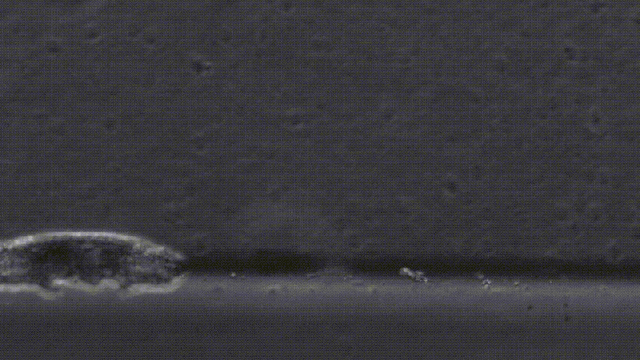Tardigrades are famous for their extreme durability, but new research shows how good they are at walking, despite their teeny size and squishy bodies.
Tardigrades feature a resume beyond compare. These microscopic extremophiles can withstand an absurd amount of stress, like freezing temperatures, intense radiation, dehydration, and even being shot from a cannon. But tardigrades “also display a remarkable robustness in their day-to-day activities,” according to research published today in Proceedings of the National Academy of Sciences.
Indeed, these eight-legged animals can be found all over Earth, requiring them to explore wet leaves, sandy deserts, Antarctic mosses and lichens, and subterranean soil. Accordingly, tardigrades, also known as water bears or moss piglets, have evolved “a uniquely versatile set of locomotor tools,” as the biologists write in their study. Jasmine Nirody, a fellow at Rockefeller University’s Centre for Studies in Physics and Biology, is the lead author on the paper.
Tardigrades are among the smallest animals on Earth, and they’re also among the smallest animals known to have legs. Typically, animals at this scale move by thrashing, wiggling, and slithering around, but tardigrades can actually walk.
That’s not a big deal for animals at the macroscale, but physics works a bit differently for the tiniest creatures. Viscous and inertial forces make it much tougher for them to navigate through substrates.
“An analogy would be if we had to walk through a vat of something really thick and viscous — say, honey or peanut butter,” Nirody explained in an email. “So, we might expect that ‘ideal’ strategies for tardigrades would be different than for larger animals,” she said, adding: “I even walk differently immersed in a swimming pool than I do on the footpath.”
What’s more, tardigrades, like other microscopic creatures, are soft-bodied, lacking either an internal or external skeleton. They’re basically gummy bears (er, gummy water bears, I suppose), but gummy bears that need to move around despite not having any bones.
“When we walk, we tend to push off the ground with our back legs to spring ourselves forward [and] this is possible because we have rigid bones that act kind of like a pole to ‘vault’ over,” Nirody explained. “But if that pole is a noodle, we have to use different strategies.”
Nirody and her colleagues set out to learn more about these strategies. To that end, the team captured videos of the tardigrade species Hypsibius dujardini, measuring their steps, tracking their gait, and carefully watching the placement of their feet as they moved from one location to another.
As the videos show, tardigrades “use their claws like grappling hooks, so they reach out and grab the substrate and pull their bodies forward,” Nirody said. “This relies heavily on the fact that the substrate is going to be stiff and isn’t going to give way on them.”
Once the team realised that this is how tardigrades were getting around, they hypothesised that changing the stiffness of the substrate would affect their walking. Subsequent tests proved this to be the case.
That tardigrades even had a regular stepping pattern came as a surprise to the researchers. Nirody and her colleagues went into the study with the preconceived notion that tardigrades are “clumsy and silly walkers,” as she put it, but they do appear to have regular coordination.
“And this makes sense, if you think about it more carefully — there are thousands of tardigrade species, living and moving through almost every environment imaginable,” said Nirody. “That’s pretty successful, and you don’t get that far being bad at locomotion, which is crucial for finding food, mates — everything important for survival!”
And walk they did. During leisurely strolls, tardigrades moved a half body length per second, and during sprints this increased to two body lengths per second. Interestingly, the tardigrade gait, or style of walking, did not change depending on speed, and the gait was reminiscent of insects 500,000 times their size.
It’s not clear if tardigrades and insects acquired these abilities from a shared common ancestor or if they evolved this walking ability independently (an example of convergent evolution). Either way, Nirody said, the answer will be fascinating, as it could yield new insights into the evolution of multi-legged walking and the biological “circuits” responsible for the behaviour.
This research could also have implications for microrobotics and nanotechnology. I’m imagining tardigrade-like machines capable of moving around the human body, delivering drugs and performing intricate repair work. Similar microscopic machines could likewise do work in synthetic systems, carrying cargo to hard-to-reach places and weaving in tiny components. It only makes sense that we should use water bears as models for microscopic machines. Tardigrades are truly awesome, and it would do us well to copy nature’s fine work.
